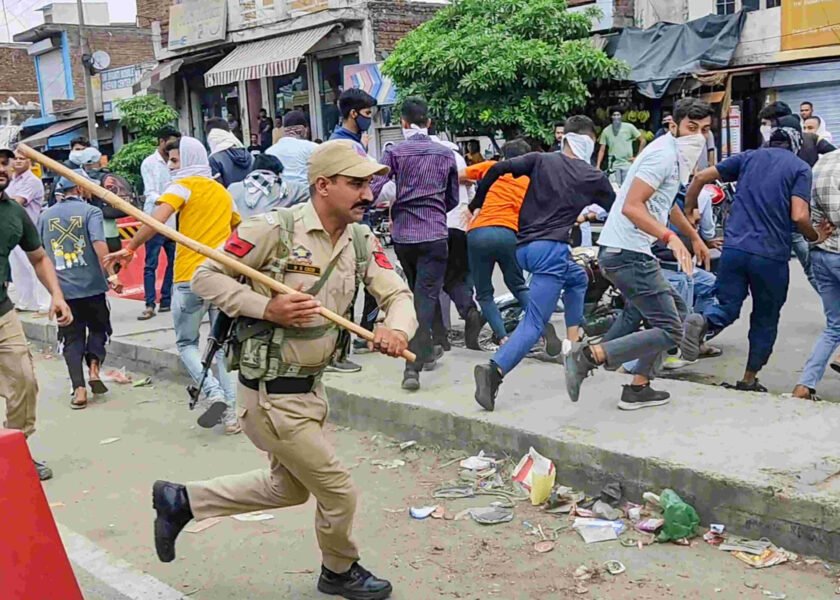
Marred with obstacles
Even though Central and state governments have been working diligently to promote the MSME sector as economy’s growth engine, plethora of challenges persist
June 27 is celebrated as World MSME Day. MSMEs not only play a crucial role in India’s economic scenario but are also of great global relevance. According to the World Bank, small and medium enterprises play a major role in most economies worldwide, particularly in developing countries. They represent 90 per cent of global businesses and contribute to more than 50 per cent of employment. The World Bank estimates that around 600 million jobs will be needed by 2030 to absorb the growing global workforce, making the development of MSME sectors a priority for most governments.
In India, the MSME sector provides significant employment opportunities at a comparatively lower capital cost than large industries and serves as an important vehicle for industrialisation in rural and backward areas. The MSME sector in India contributes about 29 per cent of GDP and 31.83 per cent of GVA. It also accounts for 48.10 per cent of exports and creates employment for almost 11 crore people.
Any industry with an investment in plant and machinery up to Rs 50 crore and an annual turnover not exceeding Rs 250 crore qualifies as an MSME. These limits have presumably been expanded based on the requests of certain industry sectors, with the aim of bringing more units under the ambit of MSME. However, in my opinion, this new definition compromises the interests of the micro sector, which accounts for 99.47 per cent of the total units under MSME and provides 96.96 per cent of employment. A micro-industry is defined as one with an investment of up to Rs 1 crore and turnover of less than Rs 10 crore. This situation leads to larger units in the MSME sector cornering all the benefits of various government schemes.
Uttar Pradesh has the highest number of MSMEs, accounting for 14 per cent of the total. The employment generated by MSMEs is almost equal across manufacturing, trade, and other services.
Despite its obvious importance to the Indian economy, the MSME sector continues to face several challenges such as the availability of adequate and timely credit, high credit costs, collateral requirements, retention of skilled personnel, access to equity capital, rehabilitation of sick enterprises, and more. Many micro units remain unregistered or unmapped, which hampers the government’s ability to develop and support them. Furthermore, one of the biggest hurdles is the lack of financing, as banks and financial institutions are often reluctant to meet the credit needs of the MSME sector, possibly due to their past experiences of high ratios of bad loans. Additionally, the MSME sector suffers from significant delays in payments, including those from the government and other entities. The lack of a reliable and up-to-date database is another challenge. Moreover, due to their limited paying capacity, this sector faces a shortage of skilled manpower, resulting in a lack of desired managerial capabilities.
Since most units in the MSME sector belong to the micro sector, it is this sector that plays a major role in generating new employment. India has the largest number of people in the working age, and with more and more young individuals entering the workforce, creating sufficient employment opportunities has become the biggest challenge for the Indian economy. Therefore, it is crucial to provide focused attention and emphasis on the micro sector. It is recommended to establish a special cell within the MSME sector specifically dedicated to addressing the problems faced by this sector.
There is no doubt that the Government of India and state governments have introduced numerous schemes for the development of the MSME sector. To provide technical education to the MSME sector, the government has implemented the Technology Centre System Programmes, which involve the development of technology centres to provide technical education and support. Steps have also been taken to simplify the registration process for these units through various digital platforms. The Micro Unit Development and Refinancing Limited (MUDRA) is another significant initiative aimed at providing employment opportunities to small entrepreneurs. Additionally, there are schemes like the Credit Guarantee Scheme, which was announced as relief during the COVID period, and the Prime Minister Employment Generation Programme (PMEGP). State governments have also introduced their own schemes, such as One District One Product (ODOP) by the Uttar Pradesh government
To enable the MSME sector to benefit from these schemes, the government has assured a single-window clearance system, eliminating the need for entrepreneurs to navigate multiple departments for permissions. Governments have also provided capital subsidy, interest subsidy, GST refunds, and reduced stamp duty. Several state governments have prescribed a preference of up to 20 to 25 per cent for the MSME sector in government purchases.
However, it is evident that there is a lack of awareness among MSME entrepreneurs regarding the plethora of government schemes formulated for their benefit. Moreover, even if they are aware of a scheme, they often lack the necessary skills to access its benefits. Therefore, it is crucial to make concerted efforts to raise awareness among entrepreneurs about government schemes and provide them with training on how to apply for various schemes and submit the required documents. Continuous handholding is particularly needed, especially for the micro sector.
If the micro sector and the entire range of MSMEs are to play their important roles in the Indian economy, certain steps need to be prioritised. To begin with, the definition of the MSME sector needs to be reconsidered. It is important to reserve a certain percentage in all government schemes, especially for the micro sector, enabling them to benefit from opportunities. By setting separate targets for the micro sector, bankers will also be more inclined to extend credit to them. One of the major issues plaguing the MSME sector is the problem of pending payments. Although the government of India has announced a 45-day payment timeframe, this is not being implemented effectively. It is imperative to establish a payment recovery tribunal for MSMEs to ensure timely payments.
The government’s preference purchase policy should ensure that the 25 per cent procurement from the MSME sector becomes a reality, and fabricated claims of poor quality should not be used as a ground to deny them this benefit. Once again, a separate quota for the micro sector within this policy is necessary. While most governments now make purchases through the digital GEM Portal, which has advantages and acts as a check against corruption, the tender specifications often tend to favour larger enterprises and exclude the MSME sector. Therefore, it is crucial to launch a major capacity building program for the MSME sector. An escrow mechanism to ensure payments to MSMEs from the government should also be considered. Above all, there is a need for the development of a separate MSME stock exchange to facilitate funding for the MSME sector from the market.
Governments tend to focus on attracting new investments and setting up new units, often neglecting the grievances of existing units. It is necessary to formulate a framework for addressing grievances and establish policies for the revival and rehabilitation of sick MSMEs. Lastly, the development of a proper MSME data bank is essential to formulate appropriate policies and channelise benefits to the MSME sector.
In conclusion, it is important to acknowledge the attention given to the MSME sector at both the central government and state government levels. However, this sector still faces challenges, and persistent and greater efforts are required to make it viable and allow it to fulfil its role as the growth engine of the economy.
The writer is an ex-Chief Secretary, Govt of Uttar Pradesh. Views expressed are personal




